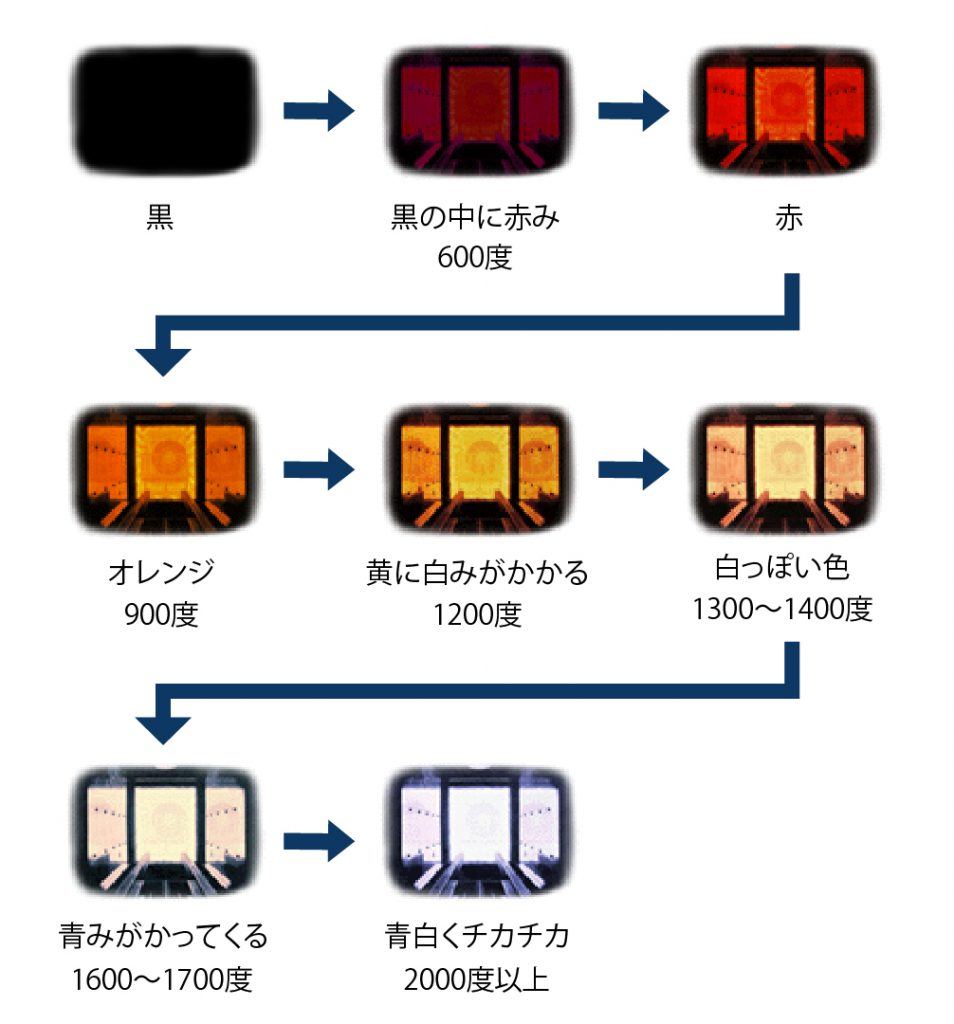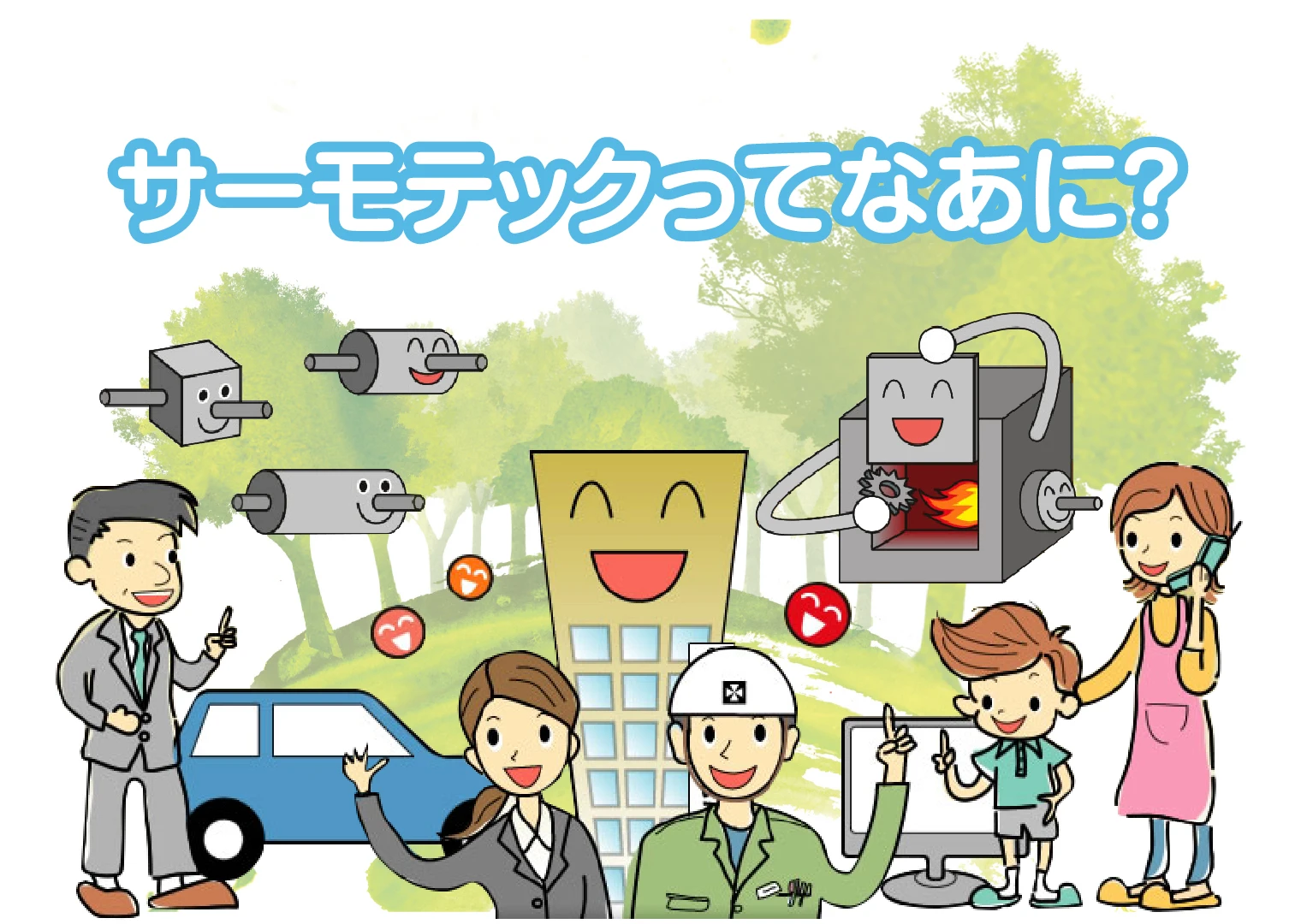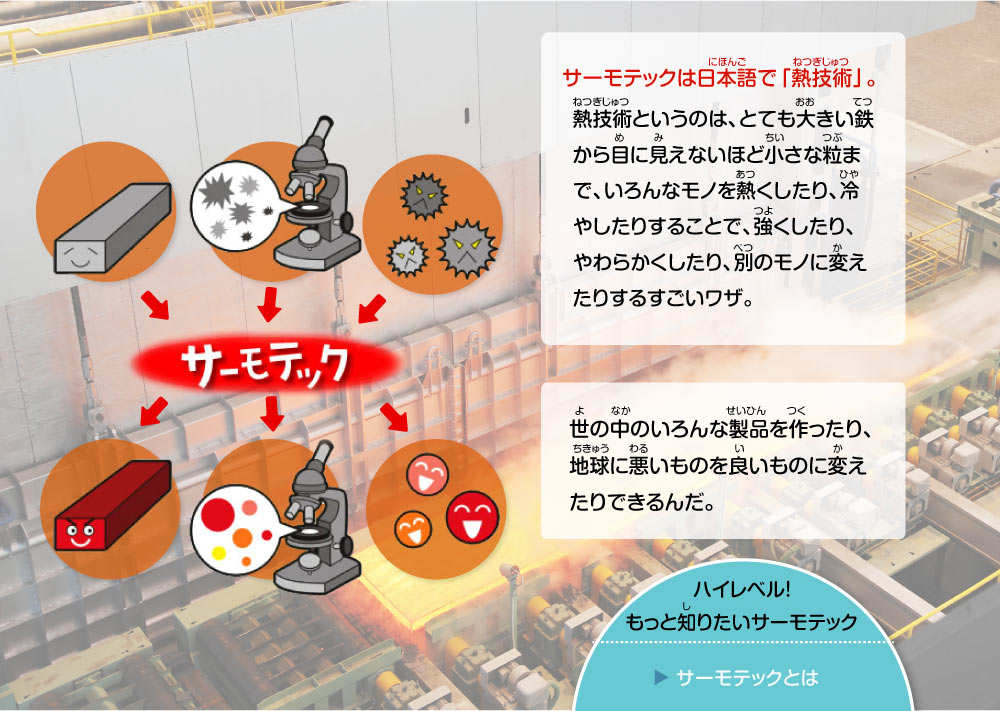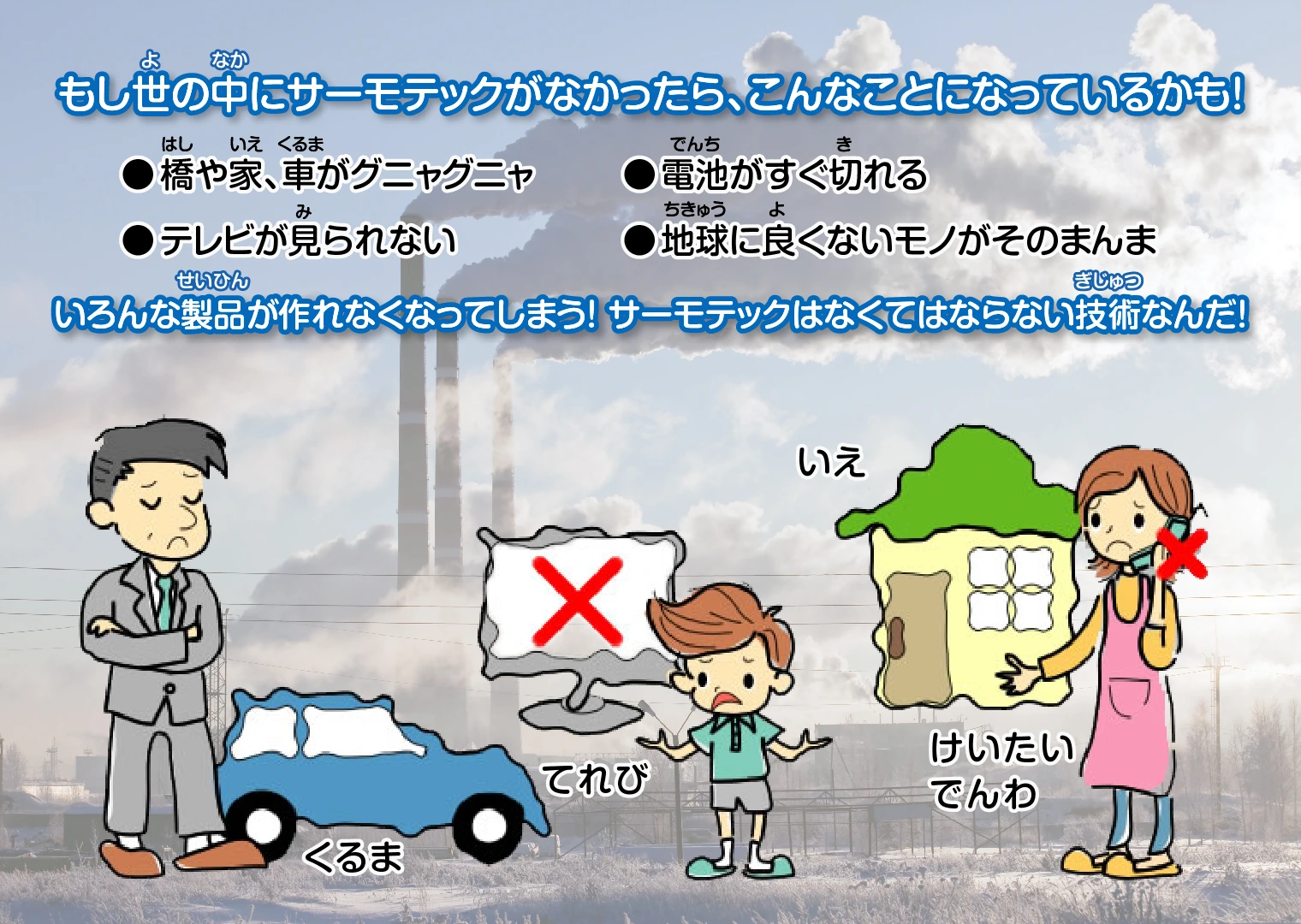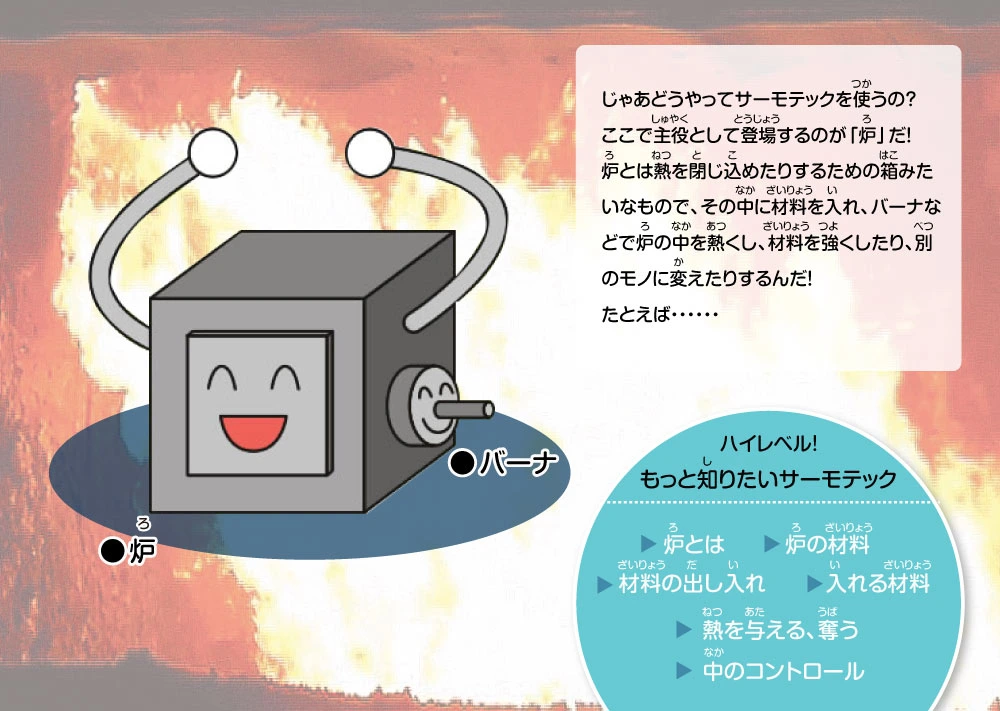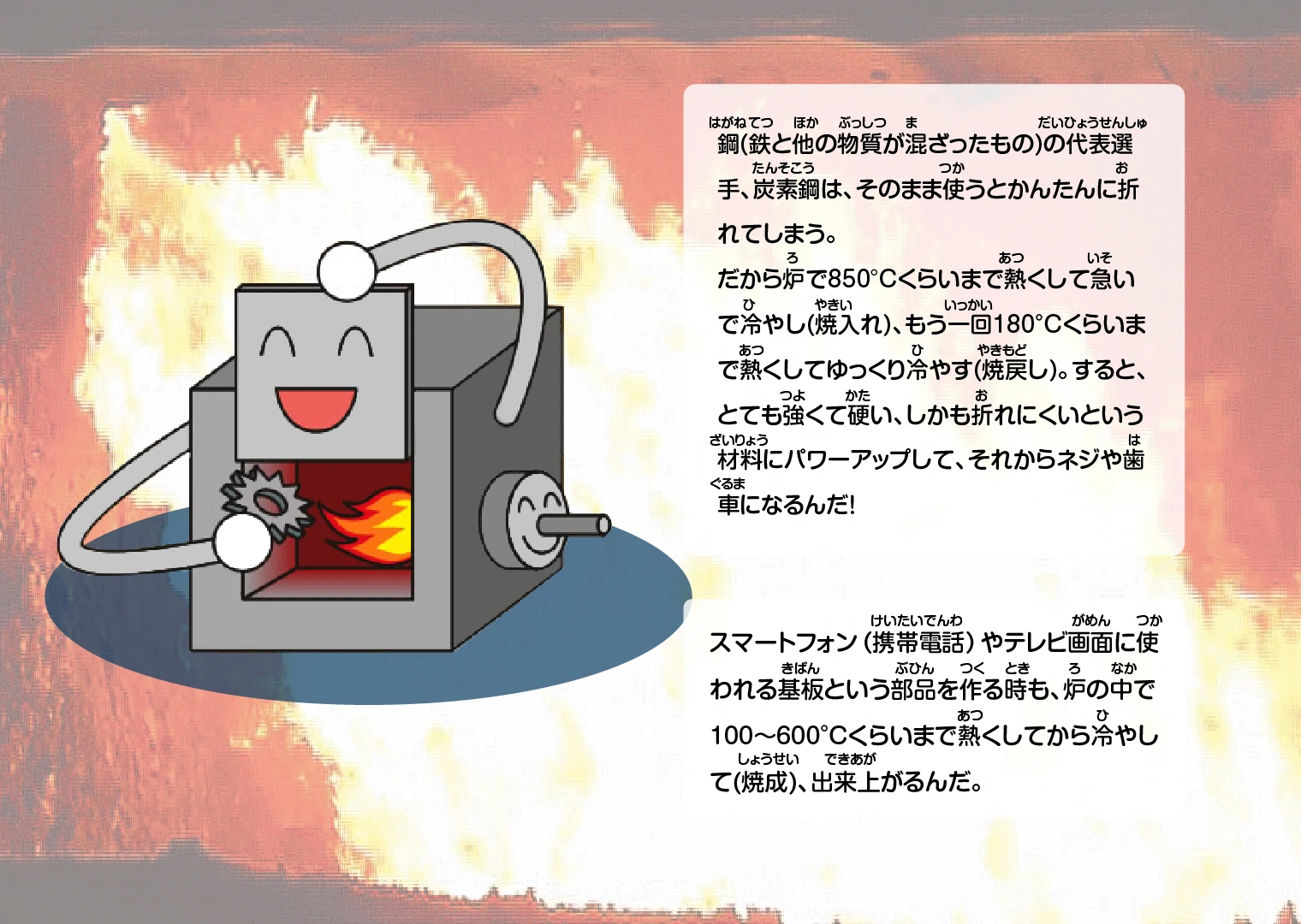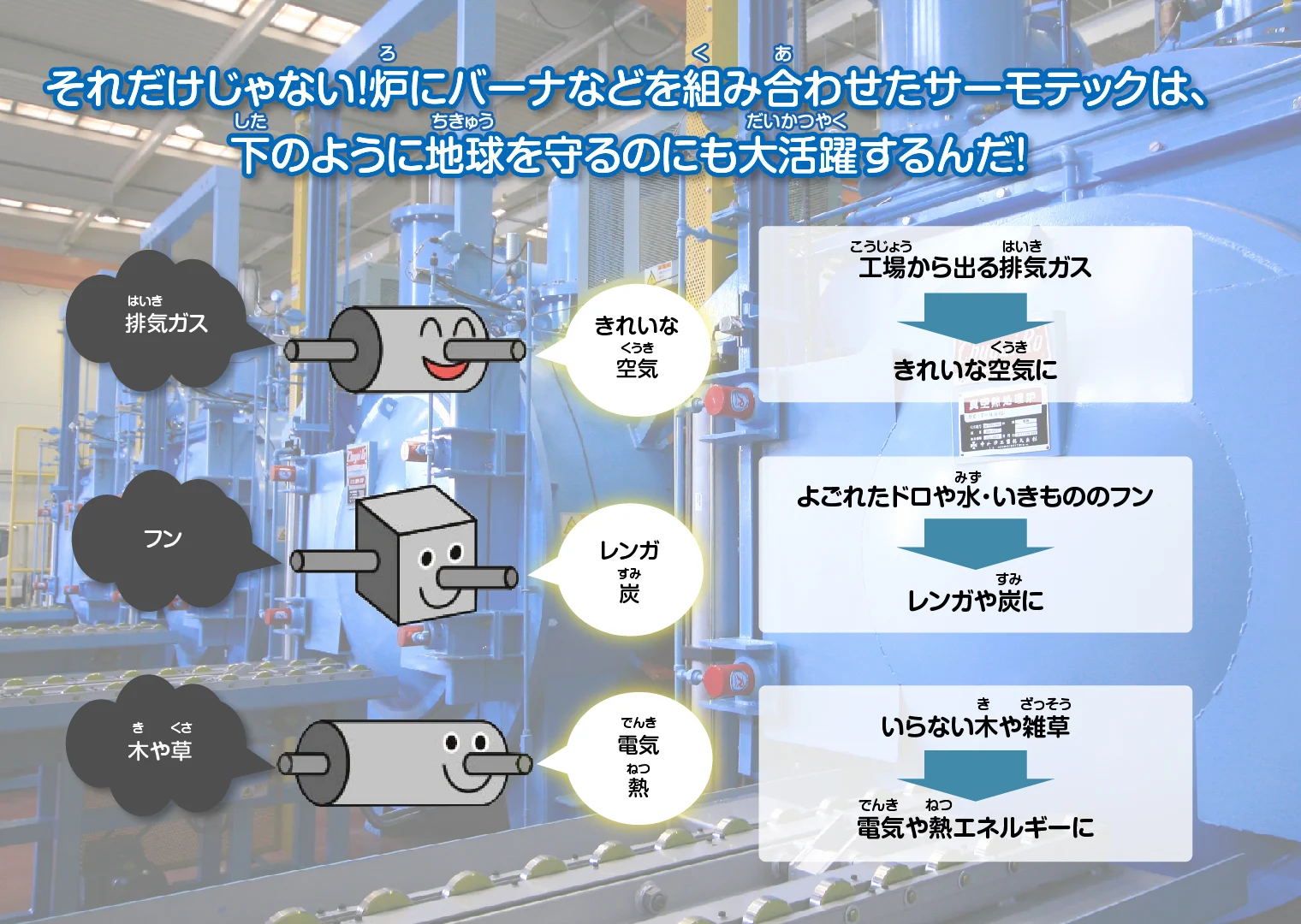
High Level! Learn more about ThermoTech
What is Thermotec?
Chugai Furnace's Corporate Statement is "Opening the Future with Thermotec.
Thermotech = thermal technology
All of our products handle some form of thermal energy.
In a nutshell, "thermotech" is a technology that uses thermal energy to heat and cool things.
What is a furnace?
A furnace (=heat facility) is a facility for enclosing heat.
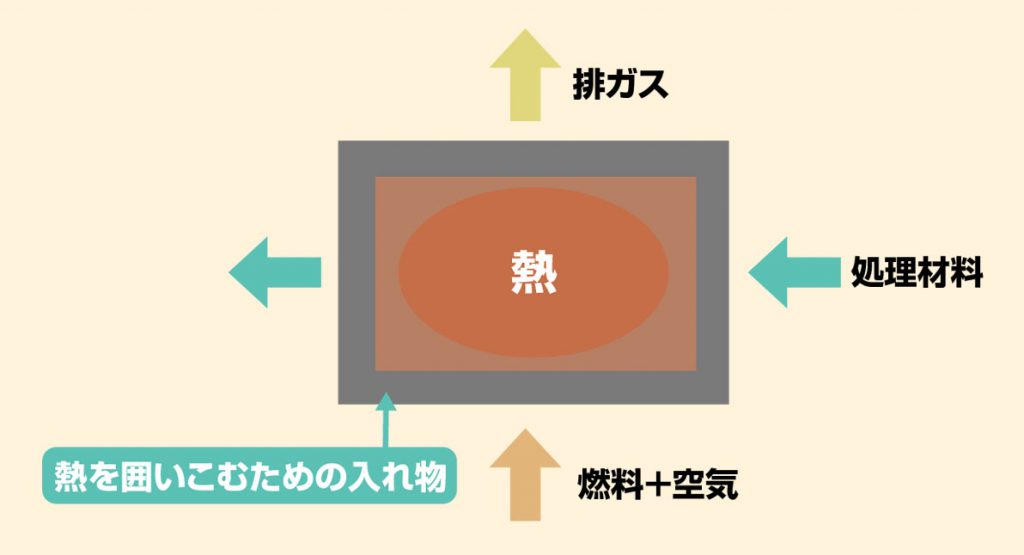
| Container for enclosing heat | furnace |
|---|---|
| move things into and out of enclosures | transport device |
| Provide heat into the enclosure | Burners, heaters |
| Establish conditions within the enclosure. | control unit |
| furnace | furnace | Commonly used words |
|---|---|---|
| kiln | kiln | Terms commonly used in the ceramic industry Often used for firing purposes Cement kilns, rotary kilns, tunnel kilns, etc. |
| furnace | lehr | Commonly used words in glass-related |
|---|---|---|
| oven | Commonly used in drying furnaces and other low-temperature furnaces. | |
| reactor | Commonly used words in the chemical and petrochemical industries |
Furnace materials
Materials for container (furnace)
Steel plate, insulation (brick, ceramic fiber, etc.)
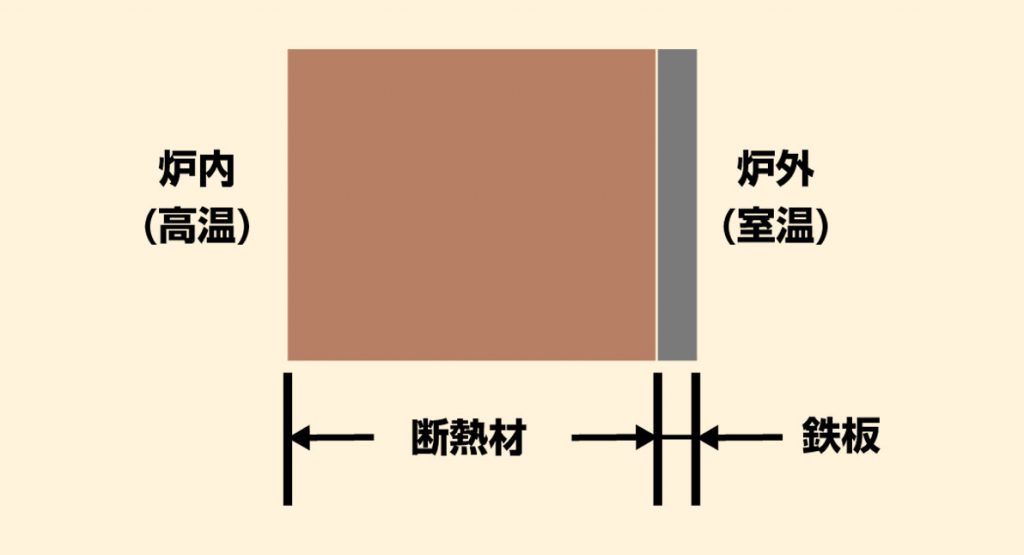
| Role of the iron plate | Keep insulation in shape Supporting materials in the furnace |
|---|---|
| Role of Insulation | Prevents heat inside the enclosure from escaping to the outside |
Condition of the inside of the container
(1) Temperature: usually higher than room temperature
[Means of changing temperature].
| Burner (to burn) Gas, oil, etc. |
electricity Resistance heating elements (electric stoves) Induction heating (electromagnetic cooker) Microwave (microwave oven) |
| Sending wind (convection) | Pouring water (heat of vaporization) | Immersion in water, oil (convection, conduction) |
(2) Gas (called atmosphere): often different from air
Combustion exhaust gas, N2H2...etc.
The type of gas will vary depending on whether or not it reacts with the material inside.
[Why atmosphere?
● Increasing the temperature makes it easier to rust (oxidize more easily)
Fill with oxygen-free gas to prevent rusting
Change the properties of materials
Carburizing, reduction, nitriding, etc.
(3) Pressure: Slightly higher than atmospheric pressure to prevent air infiltration.
Some furnaces are lower than atmospheric pressure → vacuum furnace
Vacuum is another reducing atmosphere
Trivia] Oxidation and Reduction
In a nutshell, oxidation is the association with oxygen and reduction is the exhalation of oxygen. (Strictly speaking, oxidation and reduction are explained by the exchange of electrons, not merely the exchange of oxygen atoms.) Therefore, the presence of oxygen is essential for oxidation, and conversely, it is not necessarily true that the presence of oxygen prevents reduction. Whether oxidation or reduction occurs depends on the amount of oxygen present (concentration = oxygen potential). Reduction in a vacuum is possible because the oxygen concentration is low. The oxygen concentration at the borderline between oxidation and reduction is called the equilibrium oxygen concentration.
Loading and unloading materials
Material transfer equipment is required to move materials in and out of the container (furnace).
There are various ways to do this. →Batch and continuous expressions
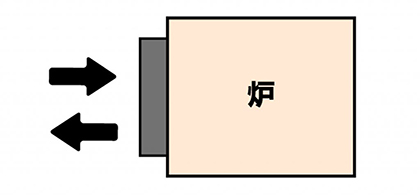
Both in and out are from the same place.
Common types in batch furnaces |
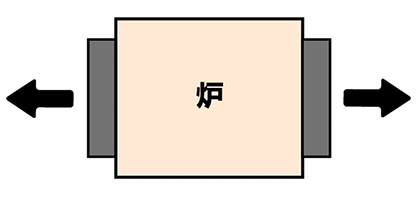
The entrance and exit are different.
Common type in continuous furnaces |
- We need...
No scratches on the material
Transport so that it is well (uniformly) heated and cooled
Reduce manpower as much as possible
Organize small items as much as possible.
| Oil pressure | Accurate but expensive Linear motion is the cylinder The rotary motion is controlled by the hydraulic motor |
|---|---|
| air pressure (of tires) | Not accurate, but inexpensive and easy to use Linear motion is the cylinder The rotary motion is controlled by the air motor I can't carry heavy things. |
| Electricity | Requires ingenuity in startup and shutdown Rotational motion is the principle. Linear motion requires a conversion mechanism. |
| Manpower | Most accurate(?) But most expensive Weak ability to get out. |
Ingredients to be included
| Slavic | large (e.g. serving size) | small | Balls for bearings | |
| Billet, brick | corner (e.g. desk, pavement) | suffix for names of swords, armour, musical instruments, etc. | Steel bars, steel pipes, gears | |
| Strip coil ~ 20t | important | light | paper | |
| 200mm | thickness | Japanese pampas grass (Miscanthus sinensis) | ~10μm | |
| Strip coil ~ 2000m OCTG to 30m |
the greatest of all | short | ||
| Shinkansen axle ~300mm OCTG to 500mm |
fat | detail | Carbon fiber Several tens of microns to several microns | |
| asphalt | stickiness | brittle | glass |

Slab (steel billet)
=Shape like a chocolate bar |

Strip Coil
= Iron plate. Rolled up |

hoop
= Coil. what is unwrapped |

Blum = iron bar
|

Yamagata Steel
(ANGLE) |

steel sheet piles
|

H-beam
|

rail
|
Giving and taking heat
| give heat Heating】 【Heating |
burner (Burn) |
Send fuel (piping) Sending air (piping) Adjust ratio |
|---|---|---|
| electricity | Install the heater Sending electricity (wiring) Adjust current (voltage) |
|
| lose heat Cooling] (refrigerant is needed) |
fan | Send gas (air) (piping) |
| pump | Send water (piping) | |
| Tank (vat) | Soak in water (oil) | |
| Heat Exchanger | Heat exchange |
Tidbits of Knowledge
Heat Exchanger and Recuperater
A heat exchanger is a device that exchanges thermal energy between two fluids.
Middle Control
The term "control" is used to refer to the conditioning of conditions inside a container (furnace).
| [What? | [all clamoring] | |
|---|---|---|
| Temperature. | To desired temperature | (Temperature control) |
| Pressure. | To the desired pressure | (Pressure control) |
| Atmosphere composition. | To desired composition | (Atmosphere control) |
| Speed. | To the desired value | (Speed control) |
control flow
1. detect current status -> sensor (temperature, pressure, speed, flow rate etc.)
2. set the desired value → instrument
3. calculate the difference (bias)
4. issue a command
I would like to see the inside of the enclosure!
Sight hole(Peephole) ITV(Industrial TV)
Trivia] Sensors
Sensors are the human equivalent of the five senses, and function to detect temperature, pressure, flow, speed, force, etc. Recently, many small and accurate sensors using semiconductor characteristics are in use.
Trivia] Temperature and flame color
